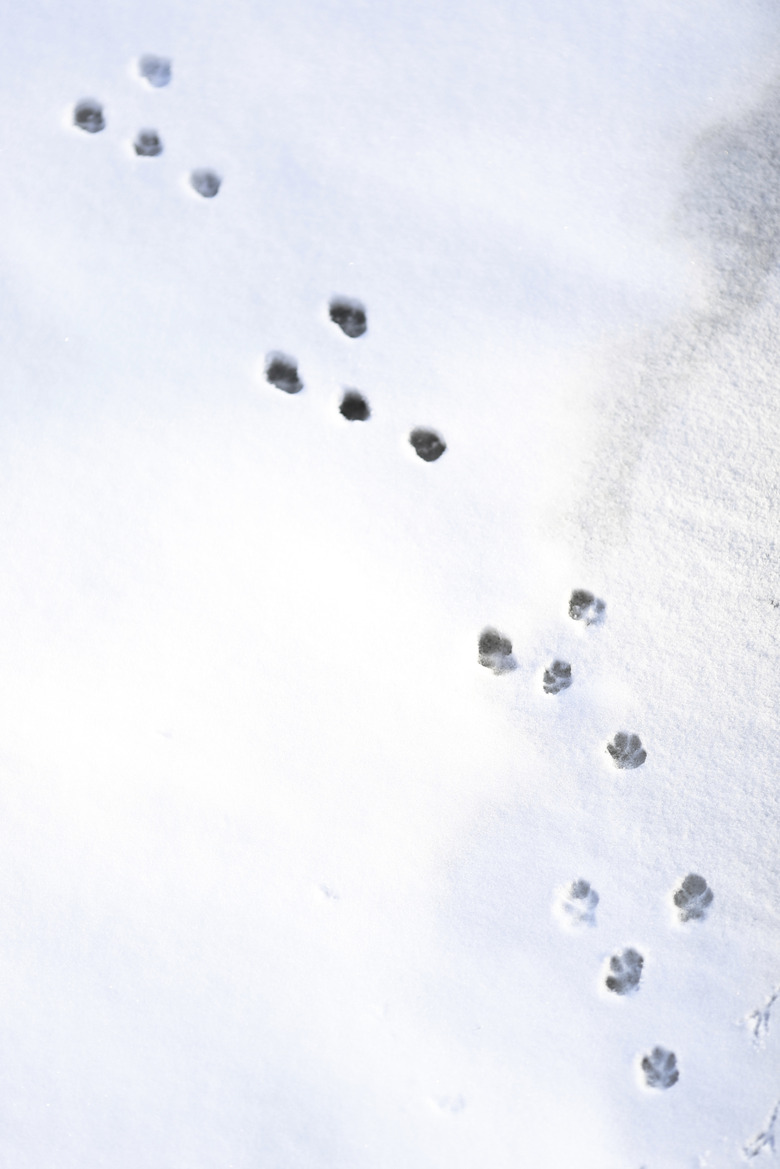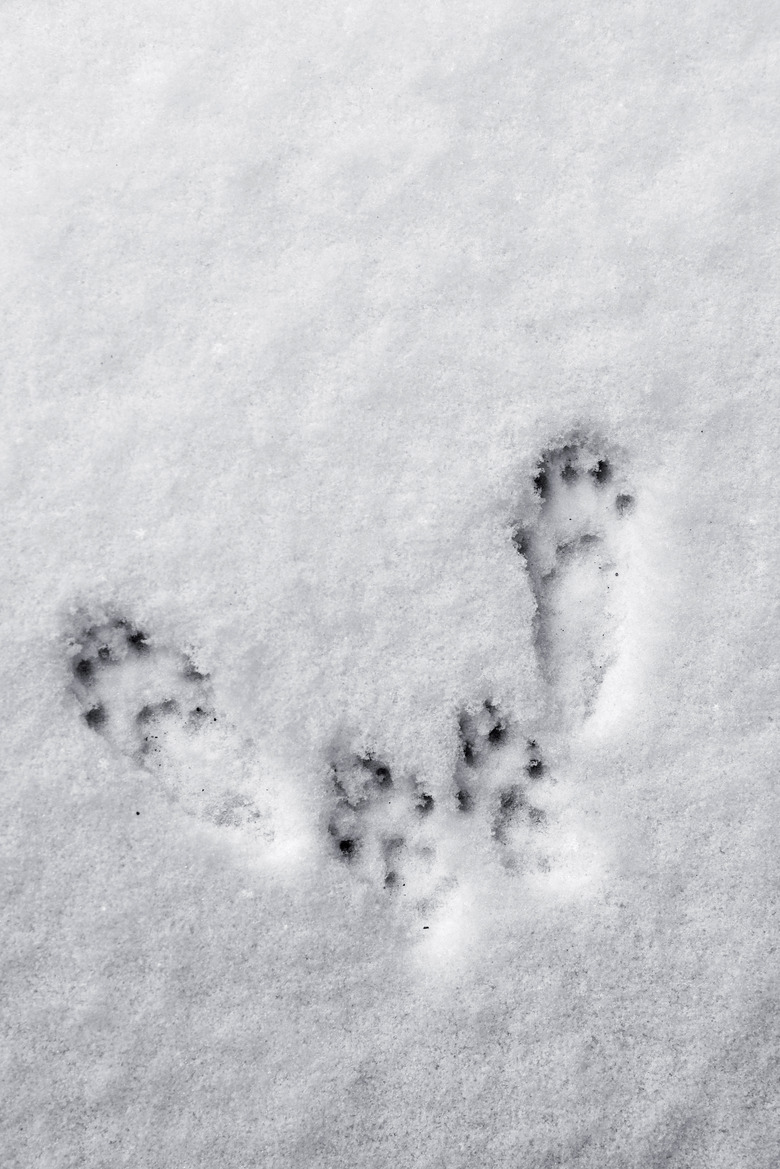How To Identify Rabbit Tracks
Most pet rabbits relish any opportunity to explore the world outside. They can get away from you unexpectedly. You should familiarize yourself with rabbit tracks and other signs of their presence before your bunny bails — it will save you valuable search time.
Warning
If your rabbit gets loose, immediately remove other animals from the area — especially dogs and cats.
Begin your search by clearing the area of children, dogs, cats and anything else likely to scare your bunny or confuse his trail. Rabbits may roam, but they are timid animals who like to stay close to areas they know — so look very carefully close to home first, widening your search area gradually, only as necessary.
Patterns Tell Stories
Patterns Tell Stories
In general, when a rabbit is moving at normal speed, his tracks nearly always take the shape of a capital letter J formed by the four footprints, with the larger back feet falling side by side and forming the top bar of the J, and the smaller front footprints lying behind the others forming the base of the J.
Rabbits move by placing their smaller front feet on the ground first, then swing their large back feet forward in front of their front feet to complete the stride, so the front feet usually present behind the back feet in track patterns. The front feet are usually slightly to one side behind the back feet in the track.
When a rabbit moves very quickly, the track sometimes changes to an inverted triangular shape. The rabbit's front feet come down parallel and so close together that they often appear to be one footprint rather than two, thus forming the back point of a triangle. The back feet keep their forward position in the overall track, parallel to one another, to form the other two points of the triangle.
When a rabbit pauses briefly, his prints may show only the large back feet — as while standing to nibble something above him or to look around. If the rabbit is resting, the smaller front feet may fall between or slightly in front of the larger back feet. You may see several track types in one area.
Distances between sets of tracks show how fast your bunny is traveling. The distance may measure only a few inches if a rabbit is gently hopping or more than 5 feet if the creature's leaping.
Similar Tracks
Similar Tracks
Learn to identify tracks of other small animals in your area. In cities or suburban areas, squirrel tracks are most likely to confuse, as they present a somewhat similar appearance to rabbit tracks. Squirrels bound by placing their front feet together before bringing up the larger hind feet together in front of the front-feet tracks — forming a roughly square or U-shaped pattern.
Other Signs of Rabbits
Other Signs of Rabbits
Rabbit signs include more than foot prints. This is good — because unless your bunny goes missing on a snowy day or you have very sandy or dusty soil in your neighborhood, footprints don't always exist. Other signs that your rabbit has passed a particular way include:
- Narrow, 4-to 5-inch trails where vegetation is pressed to the ground or bent in passing.
- Shallow, bowllike depressions in grass or loose soil — called forms — that rabbits sleep or nest in. They're generally located near overhanging bushes, tall grass or other concealment.
- Nibbled vegetation from ground level to around 30 inches high. Rabbits' chisel-like teeth sever plants crisply at an angle; their gnawing is easily distinguished from the ragged chew patterns of deer.
- Feces or urine. Droppings are three-eighths-inch balls, light brown to black and containing sawdustlike material; urine will probably only show in snow or on bare earth.
Tip
The best time to find a lost pet rabbit is in the early morning or late evening hours. Rabbits generally rest during the day and come out to eat and drink at those times.
Look for signs of passage along existing paths and areas containing concealing vegetation.

